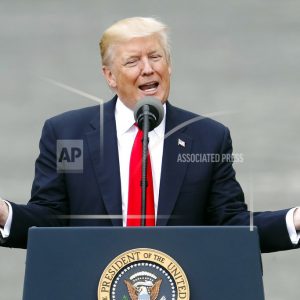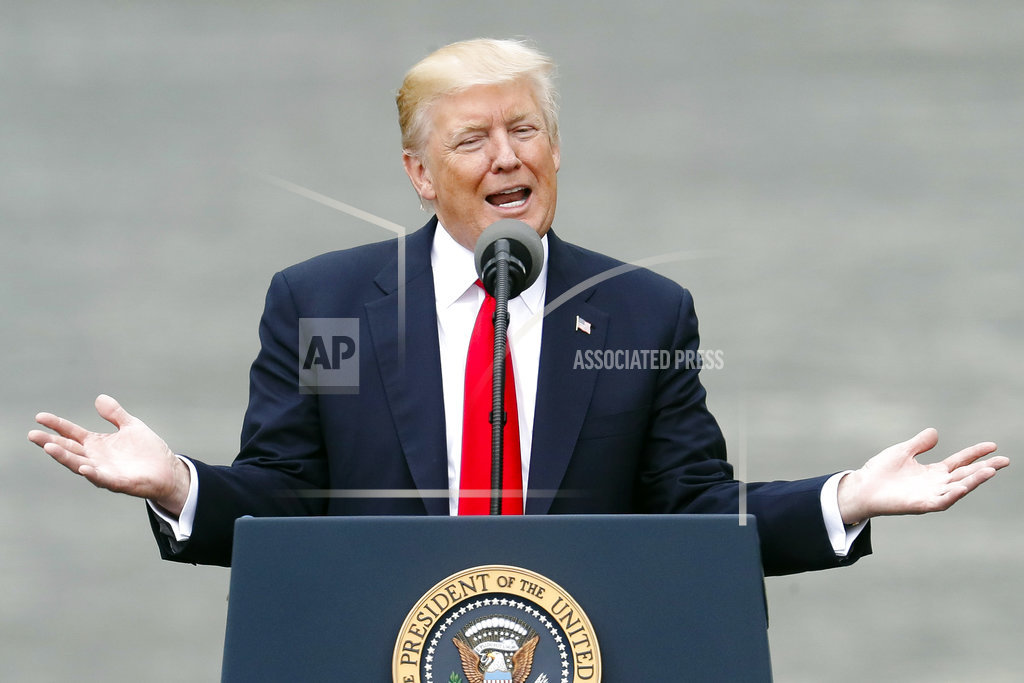
WASHINGTON (AP) — President Donald Trump sought Wednesday to give new life to a Republican health-care bill that’s facing uncertain prospects in Congress, using a speech about infrastructure in Cincinnati to go after “Obamacare,” too. He mangled some facts and repeated familiar exaggerations. A look at a few of them:
TRUMP: “Obamacare is in a total death spiral,” adding, “We want millions of Americans … to finally have the quality and affordable health care that they deserve.”
THE FACTS: The first comment is over-the-top hyperbole. The second reflects aspirations not validated by a nonpartisan analysis of the House GOP health-care bill that the president praises.
Although the insurance markets of former President Barack Obama’s health-care law are in trouble, they don’t appear to be in a “total death spiral.” Insurers have lost hundreds of millions of dollars and parts of the country are at risk of having no participating carriers on HealthCare.gov. But the turmoil appears to be concentrated in pockets, not nationwide, or “total.”
And any blame for the situation is shared by the Trump administration, whose actions are sowing uncertainty that’s contributing to higher premiums. The administration has failed to give a clear signal that it will continue to pay billions of dollars in subsidies that help reduce deductibles and copayments for low-income people. The lack of such assurances has been a major complaint from the insurance industry and from state regulators.
His pledge that GOP legislation in Congress will provide quality, affordable coverage is hotly disputed. Professional groups representing doctors have warned that the House version of the legislation would undermine recent progress getting more people into the health-care system, so chronic conditions can be picked up before they become life-changing problems.
The nonpartisan Congressional Budget Office recently said that in states that take advantage of waivers provided by the GOP bill, people with chronic health problems could wind up being priced out of the market. Healthier people are likely to have access to more affordable coverage, but concerns are being raised about the impact on those who are older and sicker.
___
TRUMP: “Just yesterday we learned that one of the largest insurers is pulling out of Ohio. That could mean another 20,000 counties and 19,000 people will have no plan available to them.”
THE FACTS: Ohio has only 88 counties. What the president meant to say, according to a White House fact sheet, is 20 counties. And according to recently published government data, 13,246 people were enrolled in exchange coverage in those 20 counties.
___
TRUMP: Ohio resident Raya Whalen “liked her doctor, wanted to keep her doctor, but she could not keep her doctor. She’s not allowed under the rules and regulations unless she paid an additional $50,000 in out-of-pocket expenses for the birth of her precious little girl, just born.”
THE FACTS: Another apparent reading error. The White House says it would have cost an additional $5,000, not $50,000.
___
TRUMP, promising to leverage taxpayer money into $1 trillion in road, bridge and waterway improvements: “Taxpayers deserve the best results for their investment, and I will ensure that this is what they get. The last administration passed a stimulus package of which only a tiny 7 percent went to infrastructure, and much of that was just wasted money.”
THE FACTS: Obama’s $787 billion package was not an infrastructure bill, but a catchall response to a deep recession, with infrastructure as a significant part. More than one-third of it went to tax cuts. Medicaid spending and other help for health care made up the next largest component. Then came infrastructure, at about 13 percent, followed closely by education. The package mixed economic and social spending, helping states train displaced workers, for example, extending jobless benefits and assisting with low-income housing.
When the plan passed in February 2009, Trump praised its combination of tax cuts and spending programs, saying “I thought he did a terrific job.”



